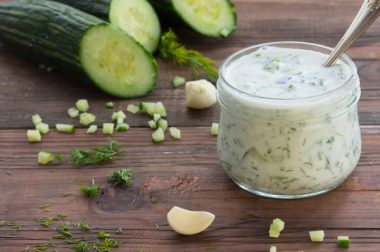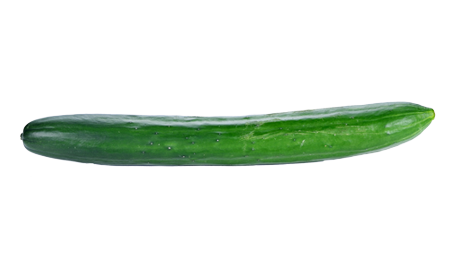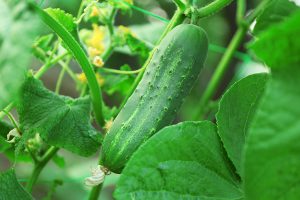Recipes we love
See all recipesCucumber sandwich with petit suisse
A creamy and tasty recipe, ideal for festive meals. A fresh taste in the mouth! A starter full of vi...
Cabbage-cucumber salad
A recipe, low in calorie and very light, that contains a nice quantity of fibres to facilitate the d...
French toast with cucumber on a bed of yoghurt
A starter so easy to prepare and ideal for summer evenings to enjoy with friends and family. This re...
Health
benefits
A refreshing vegetable
Cucumber is without a doubt one of the vegetables with the highest water content (>95%), so summer is an ideal time to eat it because of its hydrating properties.
Cucumber also contains:
- Vitamin B9
- Potassium
- Magnesium
- Zeaxanthin and lutein, two antioxidants only found in certain vegetables that contribute to protecting tissues, particularly the eyes.
Nutritional
composition
When is the right time to eat it?
Year-round.
Cucumber is available throughout the year, but it is in season from April to October.
Vegetable patch
or urban balcony?
Cucumber is an herbaceous, procumbent annual plant that grows well in loose, deep, humus-rich, well-drained soil in a sunny position.
To learn everything you need to know about growing cucumber, read the page on growing advice.
Choosing
and storing
Choosing the best cucumber:
- It should be firm, hard at either end, with a smooth, green skin
- Smaller cucumbers are tastier and contain fewer seeds
Storing cucumbers:
- In the refrigerator: One week in the vegetable drawer. It should be wrapped if it has already been sliced.
Did you know? Cucumbers are always cold! Even in the sun, the internal temperature of a cucumber stays at 6 to 8 degrees lower than room temperature.
Tips
and tricks
How to prepare cucumber:
Peel and chop into round or cubes. After washing thoroughly, you can play around with different shades of green on the skin and flesh by leaving strips of skin on when peeling.
The seeds are rich in nutrients and can be eaten, but those with sensitive digestion are better able to digest cucumber with the seeds removed (just use a tablespoon to gently scoop out the seeds after chopping lengthwise).
Don’t add salt before cooking if you want it to stay crunchy and preserve its mineral content.
Cucumbers go well with:
Raw: cucumber is a base ingredient in salads, chilled summer soups, and sandwiches, and also goes well served in batons with dips as an aperitif.
It goes particularly well with yoghurt and mixed herbs. Greek tzatziki is the ideal result of this combination (yoghurt, mint, lemon juice). It pairs well with fish and poultry, shellfish, fruit (apples, raisins), tomatoes, chives, dill, curry, and all cheeses.
Cooked: a more unusual way of using cucumber! It should only be cooked for a very short time (20 to 30 seconds in the microwave, a few minutes for other cooking methods).
Can everyone eat it?

Young children
Cucumber can be eaten from the age of 12 months. Children usually like it at this age because of its fresh taste and because they can eat it with their hands! Cucumber is delicious served in slices, in batons, with cheese, with ham, etc.
And everyone else
Cucumber is a good snack. Reach for some cucumber when you’ve got cravings or need some energy.
See plenty of other tips for encouraging children to eat vegetables
Where do they come from?
Origins and varieties
Origins
China, Turkey, Iran, Russia, Ukraine, and the US are some of the biggest cucumber producers. Germans are biggest consumers of cucumbers.
Varieties
There are over 40 varieties of cucumber, many of which are named after the region they are produced in. English and European varieties are longer, while American varieties are smaller. Aside from the difference in shape, the color and skin texture also vary from green to white, and smooth to rough (even thorny) in the different varieties.
Other well-known varieties include Japanese, Kirby, Citron, and Gherkin cucumbers.
Did you know? Pickles are actually made from baby cucumbers that are marinated or used in marinades.



 Flageolet Beans
Flageolet Beans  Dandelion greens
Dandelion greens  Vegetable garden: growing radish
Vegetable garden: growing radish 










